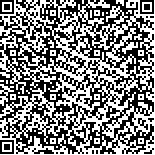|
| 引用本文: | 米智,范德江,刘晓航,郑世雯,程鹏,张鑫.基于计算机断层扫描技术重构三维生物扰动构造——以长江口现代沉积为例.海洋与湖沼,2021,52(6):1388-1398. |
| |
|
| |
|
|
| 本文已被:浏览 1188次 下载 1011次 |

码上扫一扫! |
|
|
| 基于计算机断层扫描技术重构三维生物扰动构造——以长江口现代沉积为例 |
|
米智1, 范德江1,2, 刘晓航1, 郑世雯2,3, 程鹏1, 张鑫1
|
|
1.中国海洋大学海洋地球科学学院 青岛 266100;2.中国海洋大学海底科学与探测技术教育部重点实验室 青岛 266100;3.中国海洋大学环境科学与工程学院 青岛 266100
|
|
| 摘要: |
| 生物扰动作用能够加速水层与底质的物质交换,对水层和底质的耦合作用有着重要的影响。受限于观测手段和观测方法,当前对于生物扰动构造的研究多停留在定性-半定量化的阶段。本文选取长江口现代沉积区的4个沉积物柱状样,利用计算机断层扫描技术对生物扰动构造进行三维重构,运用数字图像处理实现生物扰动强度的定量表征,对研究区域生物扰动构造发育的影响因素进行初步分析。结果表明:CT(computed tomography)值与沉积物粒级构成和含水率具有一定关系,能够较好地指示沉积物密度变化;该区出现挖掘构造、觅食虫孔构造、逃逸虫孔构造、生物遗迹构造等显性扰动构造类型,生物扰动强度介于0%-10%,扰动强度极大值出现在长江水下三角洲前三角洲和陆架过渡区,垂向上以及不同站位生物扰动构造差异显著;底质沉积物类型、上覆水团性质以及沉积速率是影响该区生物扰动构造发育的主要因素。 |
| 关键词: 生物扰动构造 计算机断层扫描技术 三维重构 生物扰动强度 长江水下三角洲 |
| DOI:10.11693/hyhz20210400099 |
| 分类号:P736.21 |
| 基金项目:国家重点研发计划课题,16YFA0600904号;NSFC-山东省联合基金,U160640号。 |
| 附件 |
|
| THREE-DIMENSIONAL RECONSTRUCTION OF BIOTURBATION STRUCTURE OF MODERN SEDIMENTS IN CHANGJIANG RIVER ESTUARY USING COMPUTER TOMOGRAPHY |
|
MI Zhi1, FAN De-Jiang1,2, LIU Xiao-Hang1, ZHENG Shi-Wen2,3, CHENG Peng1, ZHANG Xin1
|
|
1.College of Marine Geosciences, Ocean University of China, Qingdao 266100, China;2.Key Lab of Submarine Geosciences and Prospecting Techniques, MOE China, Ocean University of China, Qingdao 266100, China;3.College of Environmental Science and Engineering, Ocean University of China, Qingdao 266100, China
|
| Abstract: |
| Bioturbation at sea bottom accelerates the exchange of materials between bottom water and sediment. However, in-situ study of the bioturbation structure is limited by observation technology, and is mostly qualitative and semi-quantitative. Four sediment cores were s collected from modern sedimentary area in the Changjiang River estuary, to which computer tomography technology was applied to reveal the bioturbation structure in three-dimension and the digital images were taken and processed. The bioturbation intensity was characterized quantitatively, and the influential factors on bioturbation structure were preliminarily analyzed. Results show that first, the computed tomography (CT) value was related to sediment grain size and moisture content, and it could indicate changes in sediment density. Second, excavation structure, foraging wormhole structure, escaping wormhole structure, biological heritage structure, and other obvious bioturbation structures were observed. The bioturbation intensity was between 0-10%. The maximum bioturbation intensity was found in the front of the Subaqueous Changjiang River Delta and the transition zone of continental shelf, and the bioturbation structures varied significantly and vertically at different stations. Third, the types of sediments, the properties of the overlying water masses, and the deposition rate were the main factors affecting the development of bioturbation structure. |
| Key words: bioturbation structure computer tomography technology three-dimensional reconstruction bioturbation intensity the Subaqueous Changjiang River Delta |
|
|
|
|
|
